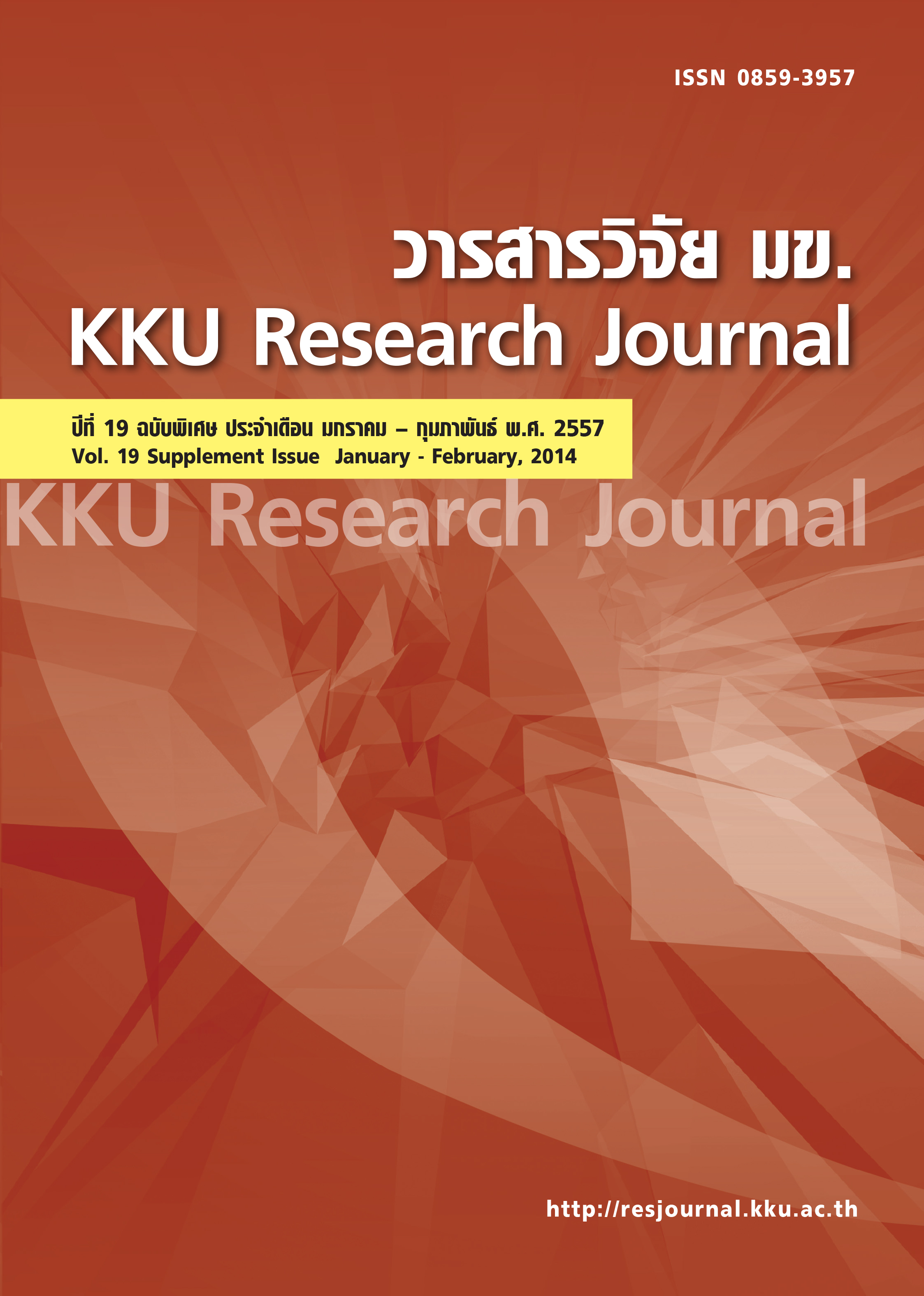A two step sequential treatment of ethanol distillation bottom liquid by bacterial fermentation and subsequent chlorella vulgaris culture under continuous illumination of various lights
Main Article Content
Abstract
Bottoms liquid from an ethanol distillation of spent sugarcane juice media was treated using a twostep process. First, a Clostridium strain isolated from a wastewater treatment pond was grown for 6 days on diluted distillation bottoms liquid. This treatment reduced sugar concentration from 10.7%(w/v) to 2.6%(w/v) and accomplished a COD removal of 68.58%. It increased concentrations of NO 3 -, P, K, Na, Ca and Mg from 183, 2218, 285, 237, 304 and 224 mg/L to 616, 2901, 1600, 3863, 389 and 472 mg/L, respectively. Subsequently, mineral removal was accomplished using a biotreatment by Chlorella vulgaris. Chlorella vulgaris was cultured in ethanol distillation bottoms liquid diluted 1:100 with water. Experimental conditions were an initial pH of 5, incubation at room temperature with continuous illumination using white, red and green light at the intensities of 3,000 and 5,000 Lux for 10 days. It was found that Chlorella vulgaris had the highest biomass (cell dry weight) of 0.94g/day under white light with illumination at the intensity of 5,000 Lux. Chlorella vulgaris grown in Basal Medium under same conditions (control treatment) produced less biomass (0.183 g/day) than the tested conditions. After the Chlorella vulgaris biotreatment, concentrations of NO 3 , P, K, Na, Ca and Mg were low enough for discharging into the environment. The NO 3 -, P and K removal was especially pronounced.
Article Details
How to Cite
Kaewnaree, P. (2017). A two step sequential treatment of ethanol distillation bottom liquid by bacterial fermentation and subsequent chlorella vulgaris culture under continuous illumination of various lights. Asia-Pacific Journal of Science and Technology, 19, 98–108. retrieved from https://so01.tci-thaijo.org/index.php/APST/article/view/83107
Section
Research Articles


